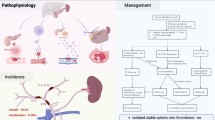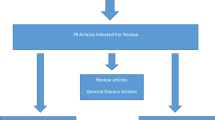Abstract
Background
Venous leg ulcers (VLUs) are common but challenging health problems. Better understanding of the risk factors involved in delayed healing of VLUs may therefore guide individualized treatment plans to improve patient outcomes.
Objective
We sought to identify the risk factors associated with delayed healing of VLUs in patients seen at a tertiary academic wound care clinic.
Methods
A retrospective analysis of 554 patients who presented to the Toronto Regional Wound Healing Clinic for VLUs in a 3-year period was performed. Patient and ulcer characteristics were recorded. Multivariate analyses were performed to compare patients with ulcer resolution and those whose ulcers did not resolve after 12-month follow-up.
Results
The average age of the patients was 67.3 ± 0.7 years, with 56 % being female. The most common comorbidities were hypertension (54 %), dyslipidemia (33 %), a history of smoking (30 %), and diabetes (26 %). Ulcer resolution was associated with a smaller ulcer size (odds ratio [OR] 0.984 [95 % confidence interval (CI) 0.973, 0.996]), shorter ulcer duration (OR 0.704 [95 % CI 0.574, 0.865]), and dyslipidemia (OR 1.848 [95 % CI 1.052, 3.246]).
Conclusion
Pro-healing factors associated with VLUs were a smaller ulcer size and a shorter ulcer duration. Dyslipidemia was also associated with improved healing, potentially owing to the use of statins. Patients presenting with poorer-prognosis VLUs should receive more aggressive treatment with earlier referral to vascular surgery.

Similar content being viewed by others
References
O’Donnell TF Jr, Passman MA, Marston WA, Ennis WJ, Dalsing M, Kistner RL, et al. Management of venous leg ulcers: clinical practice guidelines of the Society for Vascular Surgery (R) and the American Venous Forum. J Vasc Surg. 2014;60(2 Suppl):3S–59S.
Palfreyman S. Assessing the impact of venous ulceration on quality of life. Nurs Times. 2008;104(41):34–7.
Persoon A, Heinen MM, van der Vleuten CJ, de Rooij MJ, van de Kerkhof PC, van Achterberg T. Leg ulcers: a review of their impact on daily life. J Clin Nurs. 2004;13(3):341–54.
Todd M. Venous leg ulcers and the impact of compression bandaging. Br J Nurs. 2011;20(21):1360–4.
Finlayson K, Edwards H, Courtney M. Factors associated with recurrence of venous leg ulcers: a survey and retrospective chart review. Int J Nurs Stud. 2009;46(8):1071–8.
Nelson EA, Harper DR, Prescott RJ, Gibson B, Brown D, Ruckley CV. Prevention of recurrence of venous ulceration: randomized controlled trial of class 2 and class 3 elastic compression. J Vasc Surg. 2006;44(4):803–8.
Clarke-Moloney M, Keane N, O’Connor V, Ryan MA, Meagher H, Grace PA, et al. Randomised controlled trial comparing European standard class 1 to class 2 compression stockings for ulcer recurrence and patient compliance. Int Wound J. 2014;11(4):404–8.
Abbade LP, Lastoria S, Rollo Hde A. Venous ulcer: clinical characteristics and risk factors. Int J Dermatol. 2011;50(4):405–11.
Gschwandtner ME, Ehringer H. Microcirculation in chronic venous insufficiency. Vasc Med. 2001;6(3):169–79.
Finlayson K, Edwards H, Courtney M. The impact of psychosocial factors on adherence to compression therapy to prevent recurrence of venous leg ulcers. J Clin Nurs. 2010;19(9–10):1289–97.
Nelson EA, Bell-Syer SE. Compression for preventing recurrence of venous ulcers. Cochrane Database Syst Rev. 2014;9:CD002303.
O’Meara S, Cullum N, Nelson EA, Dumville JC. Compression for venous leg ulcers. Cochrane Database Syst Rev. 2012;11:CD000265.
Arpaia G, Milani M, Addeo R, Crespi A, Feltri R, Ricci E, et al. Clinical validation of a specially sized class II compression knee-sock for the prevention of recurrent ulcers in patients with chronic venous stasis (CEAP 5). Int Angiol. 2008;27(6):507–11.
Sackheim K, De Araujo TS, Kirsner RS. Compression modalities and dressings: their use in venous ulcers. Dermatol Ther. 2006;19(6):338–47.
Thomson B, Hooper P, Powell R, Warin AP. Four-layer bandaging and healing rates of venous leg ulcers. J Wound Care. 1996;5(5):213–6.
Hedayati N, Carson JG, Chi YW, Link D. Management of mixed arterial venous lower extremity ulceration: a review. Vasc Med. 2015;20(5):479–86.
Margolis DJ, Berlin JA, Strom BL. Risk factors associated with the failure of a venous leg ulcer to heal. Arch Dermatol. 1999;135(8):920–6.
Prince S, Dodds SR. Use of ulcer size and initial responses to treatment to predict the healing time of leg ulcers. J Wound Care. 2006;15(7):299–303.
Kahn SR, Comerota AJ, Cushman M, Evans NS, Ginsberg JS, Goldenberg NA, et al. The postthrombotic syndrome: evidence-based prevention, diagnosis, and treatment strategies: a scientific statement from the American Heart Association. Circulation. 2014;130(18):1636–61.
Labropoulos N, Wang ED, Lanier ST, Khan SU. Factors associated with poor healing and recurrence of venous ulceration. Plast Reconstr Surg. 2012;129(1):179–86.
Marston WA, Carlin RE, Passman MA, Farber MA, Keagy BA. Healing rates and cost efficacy of outpatient compression treatment for leg ulcers associated with venous insufficiency. J Vasc Surg. 1999;30(3):491–8.
Georgopoulos S, Kouvelos GN, Koutsoumpelis A, Bakoyiannis C, Lymperi M, Klonaris C, et al. The effect of revascularization procedures on healing of mixed arterial and venous leg ulcers. Int Angiol. 2013;32(4):368–74.
Baker SR, Stacey MC, Jopp-McKay AG, Hoskin SE, Thompson PJ. Epidemiology of chronic venous ulcers. Br J Surg. 1991;78(7):864–7.
Hohn L, Chiarenza S, Schmied E, Bounameaux H. Age-related rather than ulcer-related impairment of venous function tests in patients with venous ulceration. Dermatologica. 1990;180(2):73–5.
Collins L, Seraj S. Diagnosis and treatment of venous ulcers. Am Fam Phys. 2010;81(8):989–96.
Milic DJ, Zivic SS, Bogdanovic DC, Karanovic ND, Golubovic ZV. Risk factors related to the failure of venous leg ulcers to heal with compression treatment. J Vasc Surg. 2009;49(5):1242–7.
Skene AI, Smith JM, Dore CJ, Charlett A, Lewis JD. Venous leg ulcers: a prognostic index to predict time to healing. BMJ. 1992;305(6862):1119–21.
Kecelj Leskovec N, Perme MP, Jezersek M, Mozina J, Pavlovic MD, Lunder T. Initial healing rates as predictive factors of venous ulcer healing: the use of a laser-based three-dimensional ulcer measurement. Wound Repair Regen. 2008;16(4):507–12.
Hjerppe A, Saarinen JP, Venermo MA, Huhtala HS, Vaalasti A. Prolonged healing of venous leg ulcers: the role of venous reflux, ulcer characteristics and mobility. J Wound Care. 2010;19(11):474, 476, 478 (passim).
Evangelista MT, Casintahan MF, Villafuerte LL. Simvastatin as a novel therapeutic agent for venous ulcers: a randomized, double-blind, placebo-controlled trial. Br J Dermatol. 2014;170(5):1151–7.
Farsaei S, Khalili H, Farboud ES. Potential role of statins on wound healing: review of the literature. Int Wound J. 2012;9(3):238–47.
Kuwana M, Kaburaki J, Okazaki Y, Yasuoka H, Kawakami Y, Ikeda Y. Increase in circulating endothelial precursors by atorvastatin in patients with systemic sclerosis. Arthritis Rheum. 2006;54(6):1946–51.
Vasa M, Fichtlscherer S, Adler K, Aicher A, Martin H, Zeiher AM, et al. Increase in circulating endothelial progenitor cells by statin therapy in patients with stable coronary artery disease. Circulation. 2001;103(24):2885–90.
Kureishi Y, Luo Z, Shiojima I, Bialik A, Fulton D, Lefer DJ, et al. The HMG-CoA reductase inhibitor simvastatin activates the protein kinase Akt and promotes angiogenesis in normocholesterolemic animals. Nat Med. 2000;6(9):1004–10.
Bitto A, Minutoli L, Altavilla D, Polito F, Fiumara T, Marini H, et al. Simvastatin enhances VEGF production and ameliorates impaired wound healing in experimental diabetes. Pharmacol Res. 2008;57(2):159–69.
Chang AC, Dearman B, Greenwood JE. A comparison of wound area measurement techniques: Visitrak versus photography. Eplasty. 2011;11:e18.
Author information
Authors and Affiliations
Corresponding author
Ethics declarations
Disclosures
The findings of this study were presented at the 2015 Canadian Society of Vascular Surgery Meeting in Victoria, BC, Canada (September 26, 2015).
Conflicts of Interest
The authors (Gary K. Yang, Sarah Cao, Ahmed Kayssi, Andrew D. Dueck, and Afsaneh Alavi) declare that they have no conflicts of interest that are directly relevant to the content of this article.
Funding
No funding was received to conduct this study.
Ethical Approval
The study was approved by the Research Ethics Board at Women’s College Hospital (Toronto, ON, Canada).
Rights and permissions
About this article
Cite this article
Yang, G.K., Cao, S., Kayssi, A. et al. Critical Evaluation of Delayed Healing of Venous Leg Ulcers: A Retrospective Analysis in Canadian Patients. Am J Clin Dermatol 17, 539–544 (2016). https://doi.org/10.1007/s40257-016-0214-4
Published:
Issue Date:
DOI: https://doi.org/10.1007/s40257-016-0214-4




